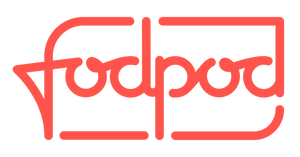
Is it Low FODMAP? How to tell
We know first-hand that the Low FODMAP can seem particularly restrictive at first. But take heart - it’s not that bad when you get used to it! Here are some pointers to help you on your way.
How do you know if something is a FODMAP or not?
The only way to determine a food's FODMAP content is through lab testing. The two main companies are Fodmap Friendly and Monash University, both based in Australia.
“That’s all well and good, but I don’t have a lab in which to test everything,” I hear you say… Well fortunately for you, the people that do the testing also make it very easy for you to access their results.
First up, Monash University's data is available to browse through their smartphone app and can help you learn about the FODMAP content and appropriate portion sizes for many foods. The Monash app is seen by many as the Fodmap Bible.
Your second option is from Fodmap Friendly in the form of a handy chatbot that you can interact with through Facebook messenger. Simply add Fodmap Friendly as a friend on Facebook, then message them with an ingredient that you want to know more about. For each ingredient you ask it, it will reply with whether it is high or low FODMAP.
(If you know of any other apps be sure to let us know!)
Too good to be true?
While the amount of information available about the FODMAP content of foods is constantly improving, it does have its limitations.
Neither the Monash app nor the Fodmap Friendly chatbot has information for many processed or packaged foods, especially not UK ones. You can however look up the ingredients for recipes or products, and if those are low in FODMAPs (or present in acceptable amounts) then you can be reasonably sure that the recipe or product as a whole will also be low FODMAP. Remember that the presence of high FODMAP ingredients does not necessarily mean something is high FODMAP if they are only present in small amounts.
Constantly looking up ingredients can be time consuming at first, but before long you will start to remember things and need to look them up much less frequently. And if it all sounds a bit much, then ask for help: a FODMAP qualified dietitian can help you select foods suited to your lifestyle and tastes and ensure that your diet is varied and provides optimal nutrition.
Food labelling for FODMAPS
Fodmap Friendly and Monash University are the two independent bodies that test and certify products as low FODMAP. If you see either of their logos on a product it means you can buy with confidence knowing that it has been lab tested and approved as low FODMAP.
Here are the logos to look out for:
|
Fodmap Friendly  |
Monash University |
Is gluten free the same as Low FODMAP?
No, gluten is a protein so it is not a FODMAP. You need to avoid gluten strictly if you are coeliac or if you have non-coeliac gluten sensitivity.
Even though gluten itself is not a FODMAP, many foods that contain gluten are also high in FODMAP carbohydrates. This is why it is important to avoid wheat, rye, barley, amaranth, and freekeh during the FODMAP elimination phase.
The free from aisle is a good place to start when looking for low FODMAP options, but be warned that many gluten-free products have high FODMAP additives such as apple, amaranth, soya, or pea. Remember to always read the label.
Hopefully now you know a bit more about identifying FODMAPs in foods. At Fodpod we have a wide range of products that have been carefully selected for their compatibility with the low FODMAP diet so that you can shop in confidence. We try to do as much of the hard work for you as we can, but it is still important for you to check the labels on products for yourself - especially if you are particularly sensitive or have any allergies.
Bon apetit!

